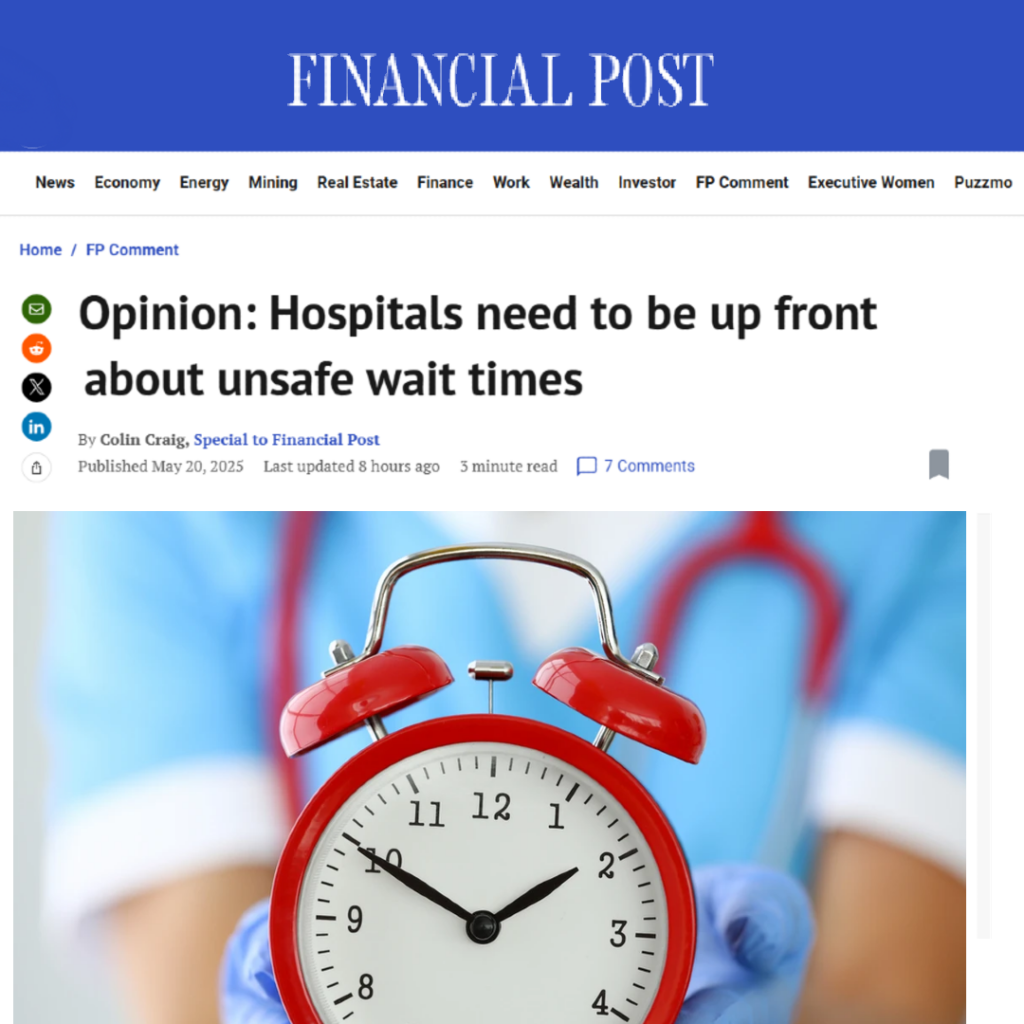At one point, Manitoba’s health care system told Fewster the delay in her treatment was because the hospital was working through a backlog arising from staff holidays. But the call to schedule her surgery never came. Until Debbie’s family went public with their story, the only time the health system reached out was to send a bill for their mother’s ambulance.
FINANCIAL POST COLUMN: Hospitals Need to Be Up Front About Unsafe Wait Times

Manitoba cardiac patient Debbie Fewster likely would be alive today if her province’s health care system had told her she faced an unsafe wait time for heart surgery. Fewster was diagnosed with a heart problem last July and told she needed surgery within three weeks. She was then put on a waiting list — and she waited and waited. Ultimately, she passed away after Thanksgiving dinner last year, having waited more than two months for surgery. Her three children and ten grandkids lost their mom and grand-mom and her community lost a dedicated volunteer who constantly gave back.
Fewster’s family says that if they had known at the start that their mother’s life was at risk, they would have looked at options for surgery outside the province. But no such warning was ever shared with Fewster. This is where Debbie’s Law could help — a policy idea put forward by SecondStreet.org and Debbie Fewster’s family.
The law would require health providers to tell patients waiting for potentially life-saving surgery two things right from the start: how long a wait they are facing and what the recommended time frame is for their situation. Such a law would bring health care into line with the standards government requires private industry to meet.
Public policy changes can have unintended consequences, of course. The goal here is to be transparent with patients, not to hold staff accountable for unforeseen circumstances. A hospital’s surgery schedule could be thrown off if a crash or other disaster generates a wave of patients suddenly requiring emergency treatment. Similarly, surgeons may do their best to provide recommended wait times for surgery, but can be off with their estimates, especially if patients don’t follow pre-surgery instructions.
Ultimately, some patients facing longer than recommended wait times might decide to seek treatment outside the province. Travelling for life-saving surgery is hardly ideal. But it’s better than the alternative.
Far better that Canada’s health care system be reformed so patients don’t face unsafe wait times in the first place. But while we wait for that to happen, something like Debbie’s Law is supported by 86 per cent of Canadians and is an idea that political parties of all stripes can get behind.
Manitoba’s NDP government has issued a directive to the province’s cardiac care provider to inform patients both of the wait time they face and the recommended wait time. There is no legal or administrative consequence for failing to provide such information, but the directive sends a strong signal.
Other provinces should take note of what Manitoba is doing. Patients dying while waiting for life-saving treatment is not uncommon in Canada. In fiscal year 2023-24, 41 Ontario patients died after waiting longer than the maximum recommended for cardiac surgery. Were those patients told they faced an unsafe wait time for surgery?
If other provinces also act, fewer families will have to endure what the Fewsters are going through. Which is why they decided to share their story in the first place.
Colin Craig is president of the think tank SecondStreet.org.
This column was originally published in The Financial Post on May 20, 2025.
You can help us continue to research and tell stories about this issue by making a donation or sharing this content with your friends. Be sure to sign up for our updates too!


